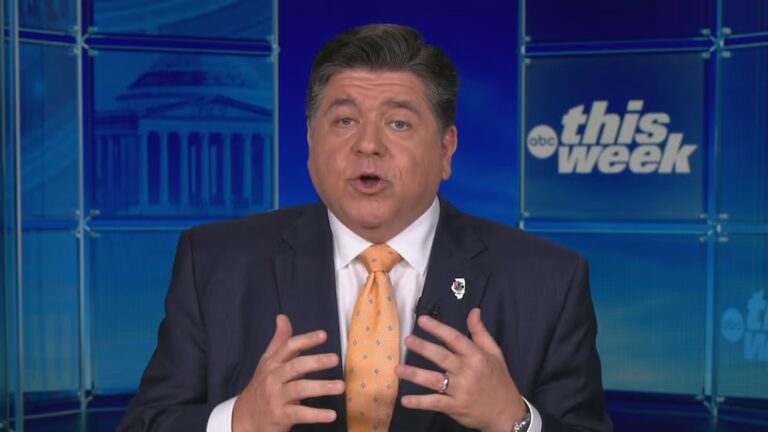When Kamala Harris gave her campaign’s biggest economic speech yet in Pittsburgh last month, she tried to keep everyone in her party happy.
She did not succeed.
Attempting to strike a balance between progressive and pro-business themes, Harris said she’d hold corporations accountable if they didn’t play by the rules — but opined that “most companies are working hard to do the right thing.” She referenced the activist presidency of Franklin D. Roosevelt, but in calling for “experimentation” rather than sweeping transformational change. Rather than being “constrained by ideology,” Harris said, she’d seek “practical solutions to problems” and “applying metrics to our analysis.”
The speech had little populist fire to be found, and, coming amidst extensive courting of Wall Street and Silicon Valley donors by Harris’s team, it set off alarm bells among some on the left. “My God,” the progressive economist Hal Singer wrote on X afterward. “We lost Kamala.”
The “we” is an alliance of advocates that has, over the past 10 years, come together in a surprisingly successful project to reshape the Democratic Party’s economic agenda. Some wanted to take on Big Tech and Big Business. Others wanted the government to revive US manufacturing, while ditching free trade and getting tougher on China. And others wanted big new spending on social policy.
But these advocates joined to fight a common enemy: neoliberalism. They sought to discredit the pro-free market and government-skeptical assumptions — and some of the specific people — that they argue drove economic policy in the Clinton and Obama years. The status quo, they believed, had hurt the American people and backfired on Democrats electorally.
In both the inside game of Democratic Party politics and the outside “war of ideas,” these post-neoliberals triumphed during the Trump and early Biden years — converting many party elites to their cause, securing key appointments, and shaping what became known to some as the New Progressive Economics.
The reformers went from irrelevant underdogs to well-organized, well-funded practitioners of hardball power politics shaping national policy. “This was an astonishing success, a seizure of some of the commanding heights of policymaking,” the historian Quinn Slobodian wrote in 2022.
Harris’s ascent has thrown all this into question. Some are urging Harris to undo some of Biden’s changes and steer the party closer to where it was in the Obama years — for instance, by being less hostile to big business and big tech. These critics point to Biden’s unpopularity, arguing that the new agenda has been tried and failed.
So far, Harris’s team has tried to keep both the reformers and their critics happy, sending signals to each camp suggesting she’s with them. But for now, winning is her top priority. “I don’t think she has an economic philosophy, and I don’t think she wants to have one until she wins the election,” one advocate in close contact with the campaign told me. (This article is based on conversations with policy experts, advocates, and former government officials, several of whom spoke on the condition of anonymity to speak more freely.)
But Harris and her party will have to choose a path forward if she wins. And understanding the present crossroads requires reckoning with why Democrats adopted this agenda in the first place.
Did the New Progressive Economics rise due to fundamental political shifts — or was it something of a fluke in a historical moment that has now passed?
And, on both the politics and the substance: Did it succeed, or did it fail?
Table of Contents
- “A credible threat and pain inflicted”: How Elizabeth Warren became impossible for the party establishment to ignore
- “A semi-vast left-wing conspiracy”: How Democrats crafted a new agenda during the Trump years
- “I never thought I’d live to see a time when my allies were in charge”: How progressives won on personnel under Biden
- The successes and struggles of Bidenomics
- “It’s hard to know what is real”: Reading the tea leaves about how Harris would govern
“A credible threat and pain inflicted”: How Elizabeth Warren became impossible for the party establishment to ignore
The transformation of the Democratic Party began during Barack Obama’s second term, when some progressive thinkers and activists’ disappointment and frustration with his administration boiled over.
The country had recovered from the Great Recession, but slowly. Banks were now somewhat more regulated, but Obama hadn’t fundamentally transformed the finance sector or punished bankers with prosecutions. Progressive critics believed this was because Obama’s top appointees, like Larry Summers and Tim Geithner, were too sympathetic to finance and too beholden to the old economic establishment’s thinking.
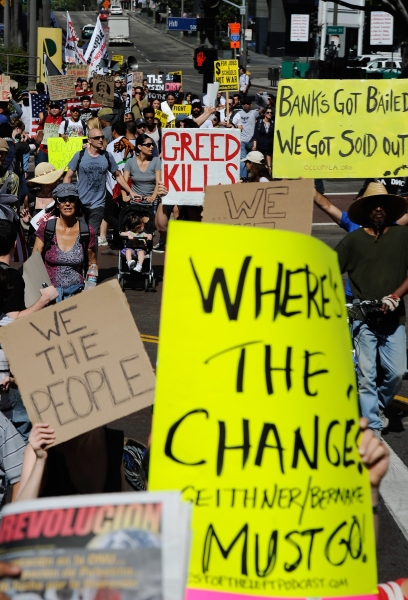
The critics argued that there were far deeper problems with the US economy that required far more sweeping change. But what change, exactly? Inspired in part by Occupy Wall Street and its “We are the 99 percent” slogan, “inequality” became a new funding priority of progressive donors and foundations. “There was an understanding starting to form that the economy wasn’t delivering,” Felicia Wong, president of the Roosevelt Institute, a progressive think tank, told me.
Much of the rethinking was happening in Sen. Elizabeth Warren’s orbit. Warren, a Harvard law professor and consumer law expert, had come to Washington in late 2008 to help Congress oversee the bank bailouts; she soon won national fame with her tough questioning of both bankers and Obama officials like Geithner.
Warren’s pet idea for a new consumer protection agency made it into law, and Obama gave her a temporary gig setting that agency up. But when she asked Obama if he’d give her the job permanently, he declined, arguing — likely correctly — that she couldn’t be confirmed by the Senate. “I was disappointed, but not surprised,” Warren later wrote. The natural solution was to run for Senate herself; she won her Massachusetts seat in 2012.
Yet, nearly two years into her term, and after dismal 2014 midterm results for Democrats, Warren was frustrated — Obama’s team, she thought, still seemed beholden to the old ways. So she started to pick fights. She sank Obama’s nomination of Antonio Weiss, an investment banker, for a Treasury Department position, and gave a fiery speech blasting a financial regulation rollback in Congress’s year-end spending bill. Warren believed “personnel is policy,” and that Obama was simply appointing and listening to too many of the wrong people.
Warren also began to look beyond Wall Street in her desire to find what ailed the American economy. She embraced a theory, pushed by a small group of writers and advocates like Barry Lynn, Lina Khan, Matt Stoller, and David Dayen, that the problem wasn’t just finance but also Big Tech and big corporations generally.
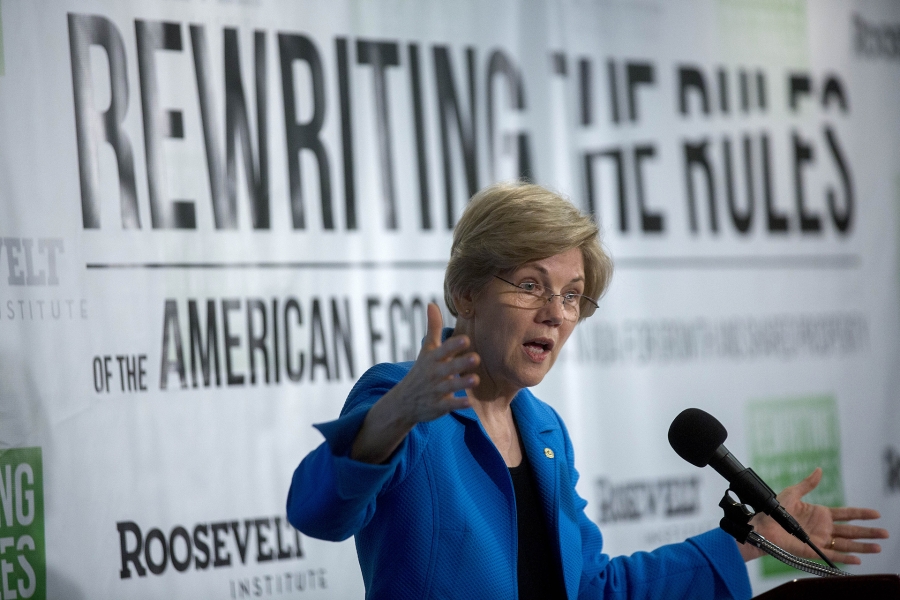
Traditional antitrust policy had been that the government should intervene when corporate concentration raised prices for consumers. But these advocates wanted to rethink and expand the concept of antitrust — to make it about challenging the concentration of corporate power, even when the companies in question (like Amazon) offered low prices to consumers. This was the start of the new antitrust movement.
Warren’s outspokenness caught Hillary Clinton’s attention. Wary of a primary challenge from the left, she arranged a sit-down with Warren, in which the Massachusetts senator made clear what she really cared about: She didn’t want Wall Street’s preferred appointees, and she had her own list of people she liked better.
Bernie Sanders’s surprisingly strong campaign amped up the populist pressure on Clinton. Yet instead of endorsing Sanders, who few believed could win, Warren remained neutral during the primaries, preserving her chance to play an inside game with Clinton afterward.
Talks between Warren’s and Clinton’s camps continued up to Election Day. The Roosevelt Institute established itself as a progressive competitor to Democrats’ favorite think tank, the Center for American Progress, and sent along Warren-friendly names: binders full of progressives.
Warren had made herself someone that Democratic leaders couldn’t ignore. “In early 2014, nobody cared at all what our side thought because there was no credible threat and no pain inflicted,” a former Warren aide told me. “By 2016, they did care — because there was a credible threat and there was pain inflicted.”
A Clinton transition official backed up this assessment, telling Politico, “It was kind of a pain in the ass to be thinking about her all the time.” Still, though she and her allies had won a seat at the table, they weren’t at the head of the table just yet.
“A semi-vast left-wing conspiracy”: How Democrats crafted a new agenda during the Trump years
Trump’s 2016 victory came as a seismic shock to Democrats. Party elites were so stunned by Clinton’s defeat that they began to question their fundamental assumptions about how politics worked. The establishment was grappling for answers; some of them looked in the mirror and wondered: Was this our fault?
A well-funded effort to convince them that it was indeed their fault soon materialized. Influential progressives who wanted to challenge the party’s consensus saw opportunity. Larry Kramer, the head of the Hewlett Foundation, launched a heavily-funded effort to discredit neoliberalism as an “intellectual paradigm.” The Ford Foundation, having already reoriented its giving around inequality in 2015, joined in. The Omidyar Network (funded by eBay founder Pierre Omidyar) began its own push to “reimagine capitalism.”
So during the Trump years, money flowed into think tanks and advocacy groups old and new, in a project inspired by conservative donors’ decades-long project of building a right-wing counter-establishment. In his book The Middle Out, journalist Mike Tomasky dubbed this an “increasingly at least semi-vast left-wing conspiracy” — a “network of people and groups” that “helped change the economic conversation in dramatic ways.”
Close ties developed among many of these thinkers and experts, many of whom had nonprofit posts but hoped to enter government or influence appointments later on. Hewlett and Omidyar grants also funded new centers at universities and projects at certain media outlets (including this one — the Omidyar Network funded two Vox reporting projects in 2019 and 2020, though they had no editorial oversight over these projects).
A key figure in this grant-making effort was Jennifer Harris, who headed the Hewlett Foundation’s grantmaking on economic issues. Harris had come to progressive economics from an unusual direction: through foreign policy. She was a national security hawk who, while working at the State Department, came to believe that the US’s longtime approach to trade deals had been disastrously captured by big corporations — that it had hollowed out important domestic industries and posed serious strategic risks in a new era of great power competition with China.
Harris concluded that flawed and outdated neoliberal thinking was failing the country on many fronts. “Paradigms like neoliberalism function at a society level,” she told me. “Their power derives precisely from how many of their premises are taken for granted, and for how much consensus they enjoy, across the ideological spectrum.” The world, she continued, was at a “dangerous” juncture, due to “the return of great power competition and the urgency of climate change.”
With Hewlett’s grant-making, Harris wanted to help shape a new intellectual paradigm to more effectively grapple with these new challenges. She funded many left critiques of neoliberalism, as well as a few from the right.
Funding the New Progressive Economics
Between 2017 and 2024, the Hewlett Foundation spent tens of millions of dollars to develop alternatives to neoliberalism. Grantees included:
Progressive think tanks: Hewlett funded policy work at the Roosevelt Institute ($5.8 million), Washington Center on Equitable Growth ($6.1 million), Economic Policy Institute ($1.4 million), Demos ($1.1 million), and the Center for Economic and Policy Research ($615,000).
The new antitrust movement: Grants went to Open Markets ($750,000), the American Economic Liberties Project ($450,000), and the Economic Security Project’s Anti-Monopoly Fund ($1.3 million).
Groups on the right: Hewlett funded the policy group American Compass ($2.9 million) and the journal American Affairs ($1.2 million), which challenged the right’s free-market thinking.
Media: Hewlett funded coverage of and reporting projects about new economic thinking at the Atlantic ($1.3 million), Boston Review ($1.9 million), and the American Prospect ($665,000), though it did not have editorial oversight over such coverage.
Academia: Hewlett funded new research initiatives or centers on the economy at Harvard ($7.5 million), Yale ($4 million), Johns Hopkins ($15 million), Howard ($10 million), UC Berkeley ($9.8 million), and MIT ($7.5 million).
But what, exactly, would the new agenda entail?
For one, many progressives embraced Warren and her allies’ antitrust push. So did Democratic leaders, who were seeking populist policies as their party was turning against Big Tech. After the leading new antitrust movement activists had been controversially ousted from the New America Foundation think tank, they formed new advocacy groups that won Hewlett and Omidyar funding.
Onetime blogger Matt Stoller became particularly influential on this topic — through his book Goliath, an email newsletter, and his pugnacious Twitter presence, he hammered home the message that Big Tech and big business were at the heart of the country’s woes. Warren, who has praised Stoller as “a brilliant thinker and writer,” released a plan to break up Big Tech companies in 2019, near the start of her own presidential campaign.
But beyond aligning with the Warrenites, Jen Harris also began to help shape another pillar of Democrats’ agenda: a new industrial policy, in which the government would intervene in the economy by financially supporting key industries — with strings attached.
Good free-market neoliberals had historically disdained this idea, believing government attempts to meddle in the economy would have bad results. But industrial policy appealed to several important Democratic constituencies.
Labor wanted more US union jobs. Climate change activists wanted money for the clean energy sector. National security hawks wanted to challenge China. Political operatives thought it might play well in the Rust Belt. Much of the business community might be happy about it too — after all, it involved giving US companies money.
Democratic policy wunderkind Jake Sullivan liked what Jen Harris — and Elizabeth Warren — had to say. In line for a top policy job under Hillary Clinton, Sullivan had been one of those undergoing a dark night of the soul since 2016. He had considered a top lobbying job at Google, but instead chose to work at nonprofits rethinking the policy agenda. And by June 2018, he sounded excited about what he was seeing.

“There’s something profound happening in American politics right now,” Sullivan wrote in Democracy. He asserted the country was at a “turning point,” disillusioned by free-market excesses and open to bold new policies. “Democrats should not blush too much, or pay too much heed, when political commentators arch their eyebrows about the party moving left,” he continued. “The center of gravity itself is moving, and this is a good thing.”
“I never thought I’d live to see a time when my allies were in charge”: How progressives won on personnel under Biden
The left did not technically win the 2020 Democratic primary, as Joe Biden — the most old school of the major contenders — emerged triumphant over Sanders and Warren.
But Biden embraced the new agenda anyway. He had long been close to labor and skeptical of pointy-headed economists from elite universities. (“He’s so old,” Felicia Wong of the Roosevelt Institute later said, “that it turns out he’s actually pre-neoliberal.”) Now, amid the deepening pandemic crisis, the idea of an “FDR-size presidency” sounded appealing. Key aides around him, like Ron Klain and Bruce Reed, agreed that bold progressive thinking was needed, and Sullivan became the campaign’s top policy adviser. Wong was named to the transition team.
Other progressives wanted to hold Biden’s feet to the fire from the outside once he won. Warren’s chief of staff Dan Geldon departed her office, starting a firm pushing opposition research about potential appointees he deemed unreliable. Jeff Hauser of the Revolving Door Project frequently disparaged potential nominees as corporate hacks and sellouts.
Such attacks often showed up in the American Prospect and the Intercept, two publications solidly aligned with the new agenda. Hewlett or Omidyar money helped fund the links in this chain — the semi-vast left-wing conspiracy was at work. (Its participants argued they were fighting against far greater corporate money and influence.)
The good-cop, bad-cop approach succeeded. Champions of the new progressive economics such as Jen Harris and many Warren allies scored key White House and regulatory posts. Biden’s Cabinet secretaries were more traditional Democrats, but when they tried to staff their agencies, their picks were often overruled by the White House in favor of alternatives preferred by the Warrenites.
The new antitrust movement scored particularly big, though it took some hardball. Biden got Lina Khan confirmed by the Senate as an FTC commissioner and only afterward revealed he’d make her the commission’s chair; Republicans (and some Democrats) were shocked that the 32-year-old calling for a total rethink of antitrust policy would be in charge.
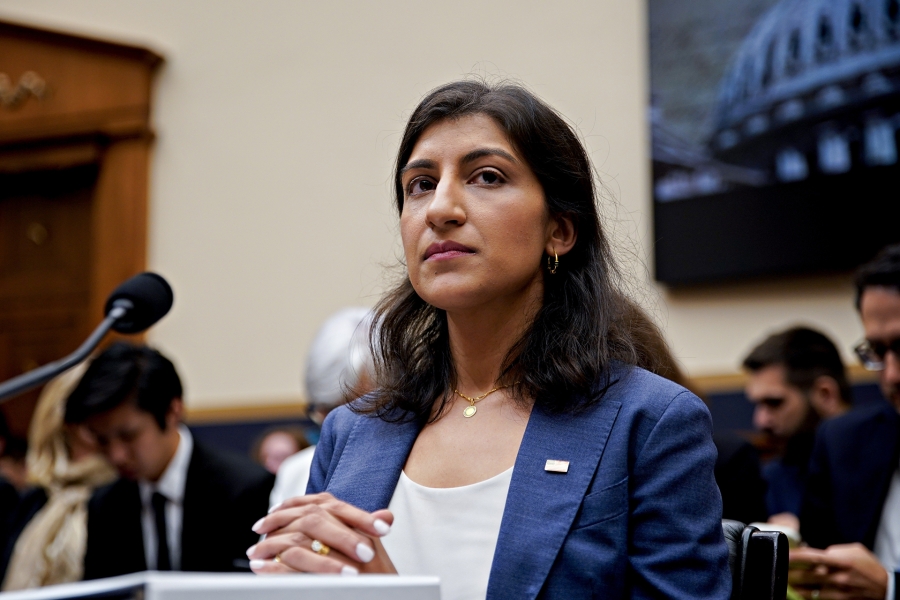
Reformers also wanted attorney Jonathan Kanter, a longtime critic of Google, for the top Department of Justice antitrust job. Attorney General Merrick Garland initially seemed disinclined to follow their counsel — but when word leaked out that Garland was considering other contenders, articles slamming them appeared in the Prospect and the Intercept. Kanter got the gig.
Quickly, Biden’s administration took on a different character from Obama’s. ”Economists and financiers are simply far less influential,” Ezra Klein reported. The nonprofit world and labor leaders rose in influence. So did elite progressive lawyers: the Biden administration was chock-full of Yale Law grads, including Sullivan, Khan, and Jen Harris. (Twenty-five of Harris’s Hewlett grantees got Biden administration jobs, according to Tomasky’s book The Middle Out.)
(Some of) Biden’s progressive appointees
- Lina Khan: A leading intellectual of the new antitrust movement, Khan’s aggressive tenure atop the FTC has chilled corporate consolidation.
- Jonathan Kanter: A law partner who’d spent years suing Google in private practice, Kanter is now suing Google atop the Justice Department’s antitrust division.
- Rohit Chopra: He helped Elizabeth Warren set up the Consumer Financial Protection Bureau (CFPB) back when it was established — now he heads the bureau.
- Jennifer Harris: After steering millions in Hewlett Foundation grants to critique neoliberalism, Harris had a White House post on international economic issues from 2021 to 2023.
- Bharat Ramamurti and Jon Donenberg: Former Warren aide Ramamurti was deputy director of Biden’s National Economic Council; after he stepped down in 2023, Warren’s chief of staff, Donenberg, succeeded him.
- Gautam Raghavan: The former chief of staff to Rep. Pramila Jayapal heads the White House Presidential Personnel Office, giving progressives great influence over staff hiring.
- K. Sabeel Rahman: A law professor who was president of the think tank Demos, Rahman headed the Office of Information and Regulatory Affairs (OIRA), a powerful post with oversight over regulations, from 2021 to 2023.
Progressives’ appointment success took on particular importance because Biden took a hands-off approach to economic policy. It was “very, very rare,” a former administration official told me, for a decision memo outlining different courses of action supported by different economic aides to be sent to the president. Biden would offer his feedback on policy plans during briefings; but staff would typically send “joint recommendation memos” that he’d then sign. In practice, that gave staff great freedom to shape policy, so long as they could agree with each other.
When the Hewlett Foundation hosted a conference on the future of neoliberalism, several Biden administration officials attended. So did the American Prospect’s Bob Kuttner, a longtime, often-lonely critic of the economic policy establishment. Afterward, Kuttner marveled: “I never thought I’d live to see a time when my allies were in charge of the government.”
The successes and struggles of Bidenomics
With Democrats in control of Congress for the first time in a decade, the party wanted to make the most of their governing majority — and that meant going big.
They started off with a $1.9 trillion stimulus bill for pandemic recovery. Economists like Larry Summers complained that this was far too big — that its size seemed to go far beyond what economic analysis suggested was necessary, and that it could worsen inflation. Democrats in Congress and the administration dismissed these warnings, not wanting to repeat Obama’s mistake of spending too little.
The rest of the Democrats’ big bold legislative agenda ran into the constraints of a 50-50 Senate. Republicans helped pass a $1 trillion infrastructure bill, but for other progressive priorities, Democrats had to tailor their plans to the restrictions of the budget reconciliation process (which bypasses the filibuster). Sen. Joe Manchin (D-WV) then nixed the sweeping social spending in the Build Back Better plan. But in the summer of 2022, Manchin did approve massive new clean energy tax credits in the Inflation Reduction Act.
Republicans also signed onto the CHIPS Act, a bill to award billions in grants to bolster a US semiconductor manufacturing industry. The bill was meant to address national security risks about the current Taiwan-centered supply chain, which was vulnerable to a future conflict with China. This was part of a broader Biden administration hardline toward Beijing that included tariffs and dramatic limits on semiconductor exports.
The IRA and CHIPS Act meant the industrial policy agenda championed by Jen Harris had made it into law, and she helped steer its implementation in the administration. Meanwhile, Khan and Kanter swung into action on antitrust, suing Amazon, Meta, Apple, and Google, among other companies. Both became key to what the administration dubbed “Bidenomics” (and the New York Times would later dub Harris “The queen bee of Bidenomics”).
But now that the new agenda was actually being implemented, its critics began to speak up — while its inherent tensions became more evident.
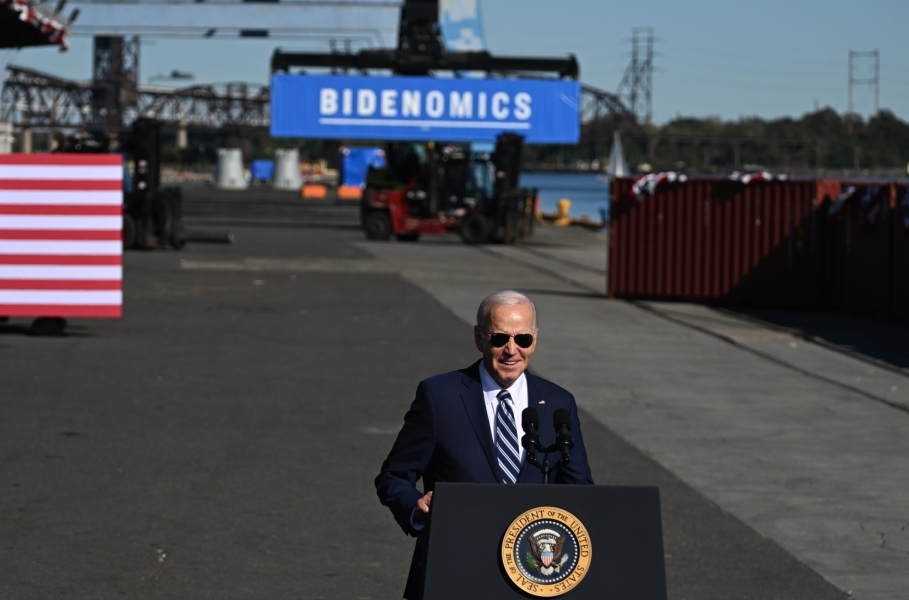
Khan’s FTC tenure was cheered by progressives but controversial among agency staff and deeply loathed by business. She was criticized for bringing cases that seemed doomed in court — winning such cases would depend on persuading judges of new legal thinking, a project of years or decades. Khan and Kanter’s main impact was deterrence: fear of expensive investigations helped chill mergers and acquisitions. Democratic policy now appeared to be that big business shouldn’t get bigger.
Meanwhile, the new industrial policy was sending billions in tax credits and grants to big US companies, which was a bit incongruous. Indeed, Warren and her allies increasingly looked askance at the CHIPS Act grants being made by Commerce Secretary Gina Raimondo, who they viewed as far too eager to send money out the door with insufficient oversight.
Progressives wanted to attach stringent labor, environmental, and social justice standards to such payouts. Others argued that demanding too much — the tendency Ezra Klein dubbed “everything-bagel liberalism” — could hamper the new industries from being built. (So far, spending on factory construction has doubled, but we are still years away from seeing whether these businesses will succeed.)
The nitty-gritty of implementation also made clear that no one approach could make every constituency happy. Climate hawks complained about the administration’s tariffs on Chinese clean energy companies. Auto workers making gasoline-powered cars objected to a push toward electric vehicles. National security doves worried Biden’s China policy was too provocative. Unions’ interest in creating high-paying US jobs naturally clashed with corporate incentives to lower manufacturing costs. And did the administration really want to bolster US companies to help them compete globally — or did it want to take those companies down a peg?
Yet in the public mind, the new economic agenda was largely overshadowed by a problem the reformers had not anticipated: the highest inflation in four decades. It was the neoliberals who had warned about this, while the progressives were caught flat-footed, as was the Biden administration.
“People don’t like inflation and we got a lot of it,” economist Adam Ozimek told me. This was a global phenomenon and not primarily caused by Biden’s policies, but the administration was slow to adjust and made it somewhat worse. “The stimulus was way too large, it came out all at once, and they proceeded to follow it with a variety of spending packages,” Ozimek said. He added that the economy is now in a good place after hefty interest rate hikes, but that we took a “chaotic path” getting there.
In the end, Biden’s economic policy ended up historically unpopular. That’s left a chasm between progressives who tout Biden’s presidency as one of the most productive and consequential in recent history, and a public deeply unsatisfied with his record. Perhaps the anti-Biden sentiment was more about his age, foreign crises, and inflation that mostly wasn’t his fault — but it’s hard to blame it on neoliberalism.
“It’s hard to know what is real”: Reading the tea leaves about how Harris would govern
Shortly after Harris replaced Biden at the top of the ticket, a factional contest for influence kicked off when billionaire Reid Hoffman — who had donated millions to elect Harris — publicly declared that she should replace Lina Khan at the FTC. Progressives responded with outrage, rallying to Khan’s defense and demanding Harris pledge to keep her in place. Harris has not yet taken a position on Khan’s future.

Many believe Harris will be friendlier to business, and especially to Silicon Valley, than Biden was. These fears tend to center around Harris’s brother-in-law, Tony West, who is Uber’s chief legal officer and has become an important Harris campaign adviser. West has been cultivating Wall Street and Silicon Valley support for the campaign, sending the message that Harris would be an ally to the business community.
More broadly, some center-left commentators argue the time has come for a rethink of Democrats’ rethink. Jonathan Chait proposed that Harris should revert to something more like the policy and politics of the Obama years (since Obama was a more popular and electorally successful president than Biden), while Matt Yglesias argued that the backlash against neoliberalism has “mostly served in practice as a way to tell people that it’s okay to do sloppy economic analysis.”
Warren’s allies, meanwhile, were somewhat wrongfooted by Harris’s ascent, as they had not built much of a relationship with her. An incident last year where Warren sounded unsure on whether Harris should stay on the ticket as Biden’s running mate reportedly led to some tension between their respective camps.
Still, some early signs suggested Harris might continue the Biden-Warren approach. In August, her campaign announced that their economic advisory team would include Biden’s former National Economic Council director Brian Deese, and Bharat Ramamurti, a one-time Warren aide who had been Deese’s deputy.
The reformers were initially encouraged when, in mid-August, Harris proposed a “federal ban on corporate price gouging” to combat high grocery costs. “I was really surprised and pleased that she pointed at big food corporations as a causal factor in higher food prices,” Matt Stoller told me shortly afterward. But centrist pundits criticized the idea, Republicans accused Harris of proposing socialistic price controls, and the campaign soon put out word that the policy would have limited impact.
Later that month, Harris’s advisers said she supported a proposal to tax unrealized capital gains (stock that had appreciated but not yet been sold) for people worth more than $100 million. It was a way to raise revenue and hit the wealthy; in a CNBC appearance, Ramamurti defended the idea from skeptical anchors. But investors were furious. Soon afterward, billionaire investor Mark Cuban, a prominent supporter of Harris in close contact with the campaign, insisted that she wouldn’t actually go through with the idea, because it would “kill the stock market.”
As the campaign has gone on, Harris’s economic line has appeared to some to grow more cautious. Her policy plan promises a lot of new and expanded tax credits, and would raise taxes on corporations and the very wealthy, but says relatively little about expanding the welfare state. She offered an olive branch to cryptocurrency companies — in contrast to top Biden appointees and Warren, who wanted to crack down on the industry. Harris has talked about cracking down on corporate “bad actors,” but emphasized that those are the exception.
When I followed up with Stoller in late September after Harris’s Pittsburgh speech, his mood was one of deep pessimism. “I think she’s gonna do what rich people — billionaires — want,” he told me.
The campaign’s economic proposals, Stoller said, were “a mishmash of nonsense.” The progressives who had joined the campaign’s economic team, he now believed, didn’t “have any real influence” and were only included to throw a bone to critics on the left. “I think this is the Tony West show,” he said. “And if she wants to make it clear that it’s not, she needs to say so.”
If Harris won and returned to neoliberal thinking, Stoller argued, the consequences would be “a failed presidency,” “intraparty war” and perhaps even “losing a war with China.” (After we spoke, Stoller called me back to say he was speaking for himself and not his employer, and that his views on Harris’s campaign changed day-to-day.)
Others were more optimistic, or at least agnostic. Jeff Hauser of the Revolving Door Project told me while he was “concerned” about Harris’s rhetoric and apparent friendliness to the cryptocurrency industry, he was cautiously optimistic that Harris would keep Khan and Kanter in place. “There isn’t really a meaningful policy apparatus and the transition is extremely barebones and noncommittal,” Hauser said. “So it’s hard to know what is real versus what will turn out to be smoke signals that are entirely irrelevant.”
The antitrust agenda, reformers worry, could be dropped or seriously weakened. But for industrial policy, the question is less whether it will continue than what it will look like. Reformers fear it will become a corporate subsidy program in which the priorities of labor and other progressive interests take a backseat — that is, that it could start looking a lot more neoliberal.
Meanwhile, the world has changed from the Trump years. On a range of issues, the leftward movement of Democratic politicians and voters appears to have abated. Personnel changes and strategy shifts have occurred at the foundations and think tanks that pushed the new progressive economics. New topics, like AI, have risen to the top of the agenda, and need to be hashed out. For instance: should the US boost domestic AI development as part of security competition with China, or is any big AI company so dangerous that it should be regulated within an inch of its life?
The post-neoliberals’ level of influence in these debates will hinge on whether they’ve become an inextricable part of the Democratic coalition — or whether their rise under Biden was born of unusual circumstances that no longer exist. A critic of the reformers mused to me that their rise to power may have been largely due to “a lack of supervision” in the Biden White House: “And maybe once the president returns, the whole thing starts to implode.”
Source: vox.com

